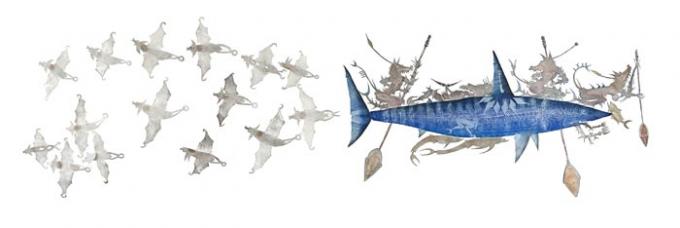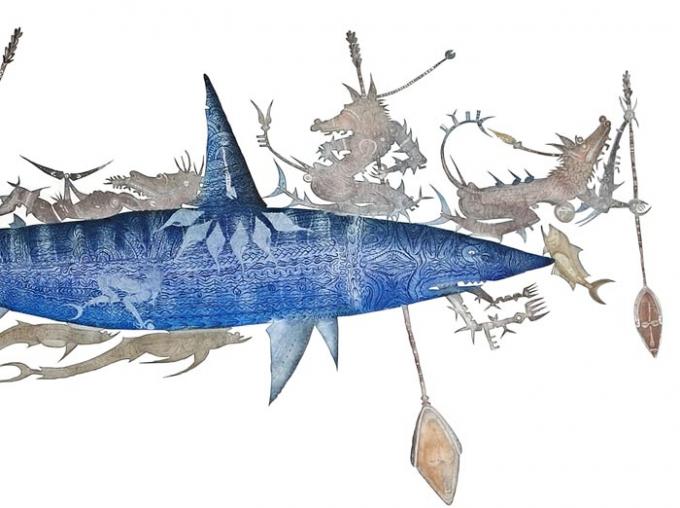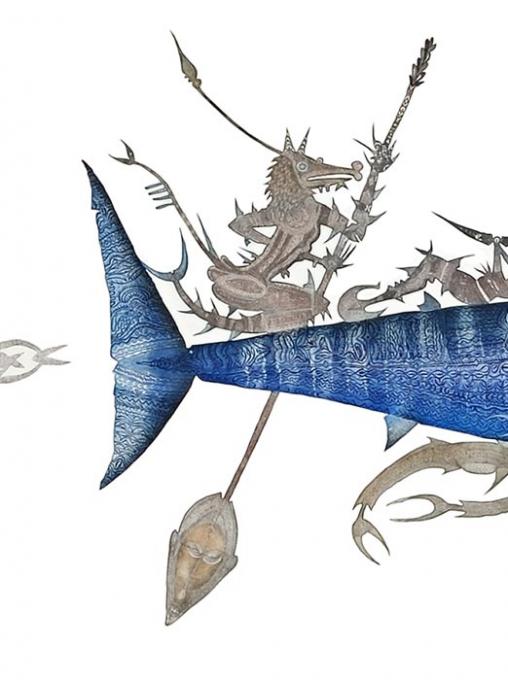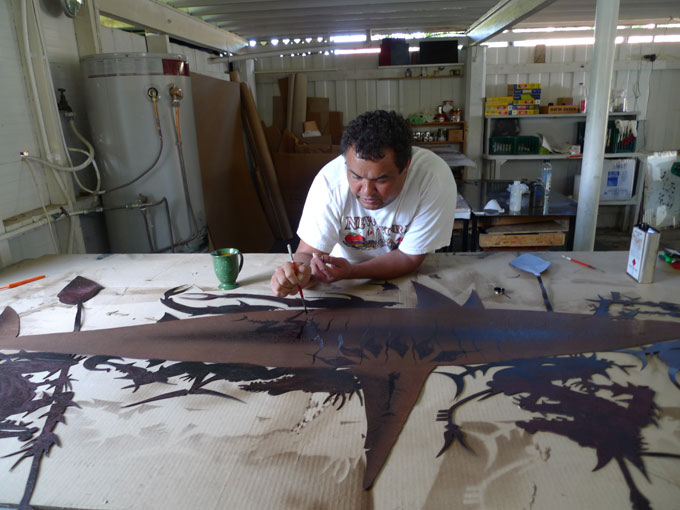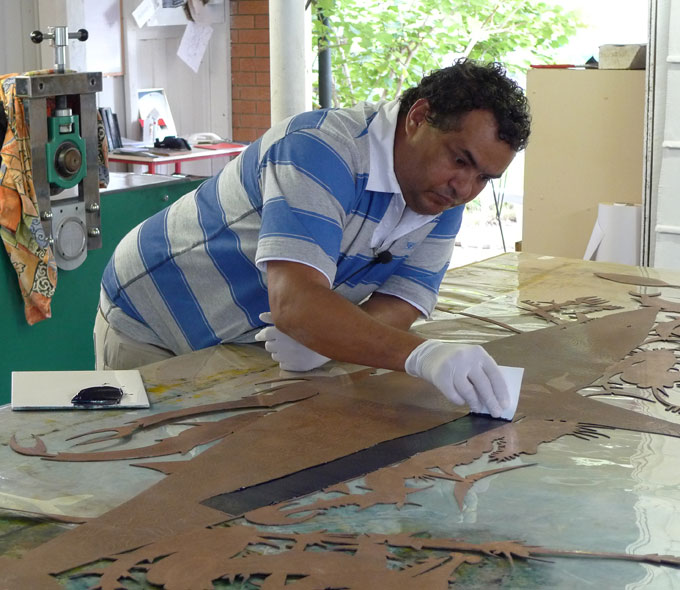Dennis NONA
Mutuk , 2008
Art : Aboriginal
Origine : Ile de Badu
Dimensions : 513 x 216 cm
Medium : Etching
Price : Edition épuisée / Sold out edition
VENDUE
/ SOLD
N° : DN150
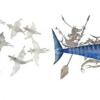
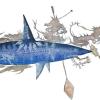
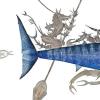
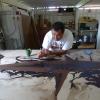

ed./15Mutuk is a traditional legend unique to the artist’s island of Badu. It is a story about a man from the village of Argan who eventually came to grief as a result of his greed and refusal to share food with his fellow clansmen. In those times the customs and laws were very strict. All people were obliged to share with each other and most importantly with the members of the Kwod which was a group of highly respected men, made up of a chief and other clan leaders.Every morning Mutuk would leave the safety of his tree house to go fishing, at a point near the reef where he usually caught an abundance of Snapper and other fish. Members of the Kwod heard about Mutuk’s bountiful catch and were curious as to why he was not sharing with his neighbours. So they sent one of their members to his home to establish exactly how many fish he was catching. Below Mutuk’s tree house a huge pile of fish skeletons were found. These were taken back to the Kwod as evidence of his greed. It was decided that Mutuk’s transgression should be punished, so the sorcerer members of the Kwod sang over the bones to cast a spell on him.Soon after, when Mutuk was out fishing, a large Snapper flicked off his spear and slid down the rock towards the water. Mutuk jumped in to the water to retrieve the fish but was caught and swallowed by a huge Bailer Shell shark (Alup Aw Baidam). The shark headed north, away from Badu in the direction of Boigu. Becoming aware of Mutuk’s absence, the sorcerers were satisfied that their spell had worked and began preparing for the funeral ceremony that would take place at Mutuk’s village of Argan.While Mutuk was inside the shark, he could tell by the temperature if it was swimming near the surface or in the depths of the sea. Because of the currents it was cold near the surface and warm down deep. When he experienced a long period of cold he realised the shark must be swimming on a reef.Mutuk had been swallowed while he was holding a Celalal or pippi shell. He used this shell to cut himself out of the shark’s belly. When Mutuk emerged from the shark he found himself in waist high water in sight of an island which happened to be Boigu. Like all strangers arriving on the island the Boigu people were initially hostile towards him until a Badu woman who had married a Boigu man, recognised him. She was in fact Mutuk’s sister.After several days following Mutuk’s arrival, the Boigu people decided to take him back to Badu. After setting off in a canoe manned by Boigu warriors Mutuk’s sister observed a large number of flying foxes flying to the south east towards Nagir. In the Torres Strait these mammals are associated with very powerful magic. This occurrence is known in language as Patcap. The formation and direction of flying foxes was a sign that something untoward would happen to Mutuk on his return to Badu. Mutuk’s sister was distraught with the knowledge of his impending fate.On Mutuk’s arrival back on Badu the Argan villagers were alarmed and surprised as the preparation for his funeral ceremony was still in progress. The Kwod decided that he should be beheaded and that sealed his fate. This legend is a cautionary tale that taught the Badu Islanders the importance of sharing and observing the laws and customs, and the consequences if these rules were transgressed.Mutuk can be seen in the shark’s belly holding the pippi shell and also on its back representing his journey back from Boigu to Badu. The Kwod is represented by the six shells below the dorsal fin. The fish skeletons discovered beneath Mutuk’s tree house is seen in the dorsal fin. The snapper Mutuk caught is shown in the shark’s mouth from which Mutuk’s hands are emerging. The three flying fox spirit figures are seen on the sharks back with paddles and images of traditional masks in their blades. Various regalia are seen on these three figures including their tails which reflect the Sagi seen hanging from traditional grass skirts. A dugong is seen in the circular element below the front flying fox representing one of the main totems from Boigu. Two Ramora or sucker fish are seen attached to the sharks belly were used in the traditional hunting of dugong and turtle.The fifteen flying foxes seen trailing the shark are the ones observed by Mutuk’s sister much to her despair, as Mutuk left Boigu on his return to Badu.
